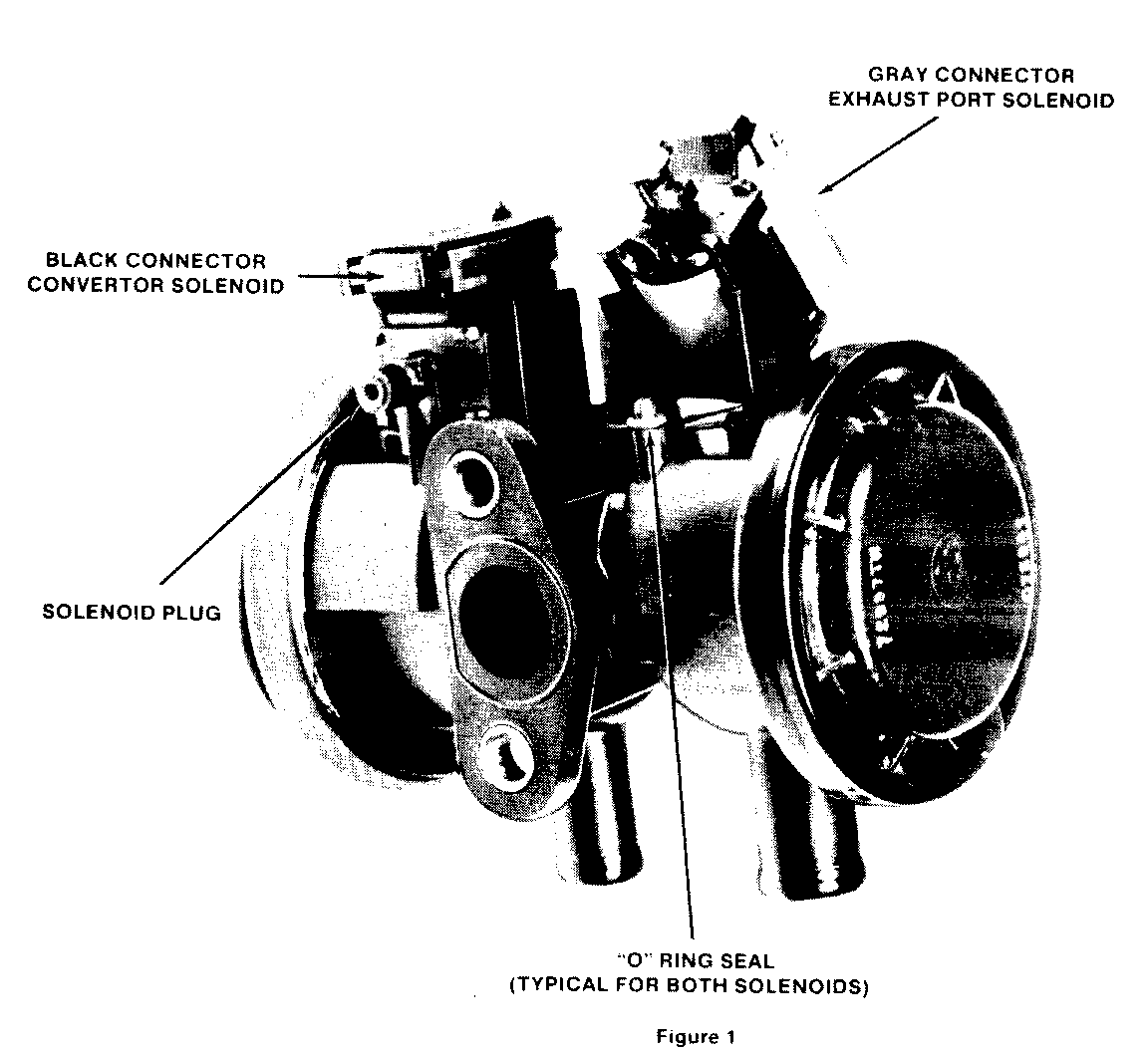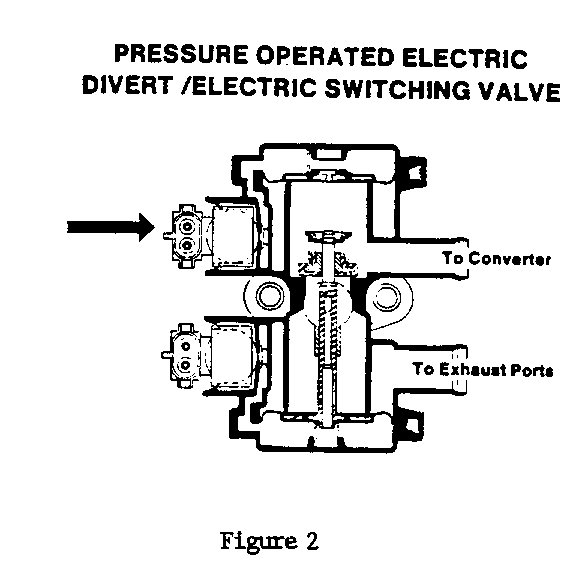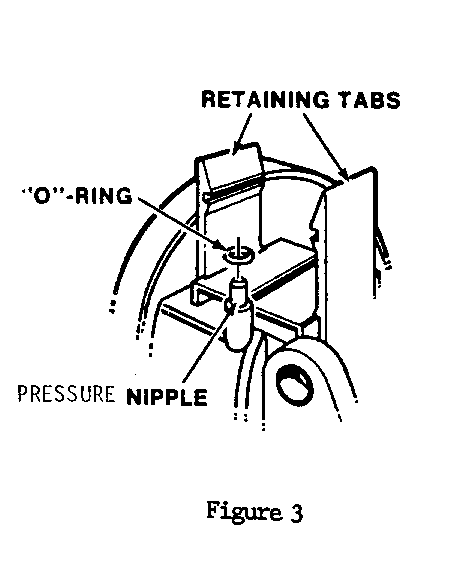NOISY 'PEDES' VALVE INFORMATION

Models Affected: 1984 BUICK V-6 ENGINES, 3.0L, 3.8L, 4.1L, (VIN CODES E,A,4)
A popping noise may be emitted from the (PEDES) A.I.R. management valve. This noise may occur due to one of two possible causes, it may be caused by a missing solenoid plug on the black converter solenoid, see figure (1).
The other possible cause for noise is a missing "O" ring between the black solenoid and the air management valve, see figure (1).
A new solenoid, Part Number 17110655, has been released for service to repair this condition. Included with this solenoid will be (2) "O" rings.
Procedure for replacement of black solenoid on (PEDES) Valve.
A. Disconnect electrical connector from black solenoid, see figure 2.
B. Release both retaining tabs from solenoid, using a suitable screwdriver, see figure 3.
C. Remove solenoid and "O" ring.
D. Lightly lubricate and install the new "O" ring over nipple of pressure tube. (New solenoid is supplied with two (2) "O" rings, only one of which is required at this time).
E. Install new solenoid using care to align opening in solenoid with pressure nipple on valve, and snap into both retaining tabs firmly.
F. Connect solenoid electrical connection.
G. Inspect and verify proper operation of PEDES valve. See Section 6-E "Driveability and Emissions - Carbureted" in the Chassis Service Manual.
Diagnostic Note
If the "O" ring is missing or leaking on the gray connector solenoid, air will be diverted to the exhaust manifolds which will cause lean exhaust, low oxygen sensor voltages, fixed 10 DEG dwell (duty cycle) and possibly a code 44 to be set.
Warranty Claim Information
Operation Numrber T-5069 Labor Time Allowance for one Solenoid .2 Labor Time Allowance for both Solenoid .3 Failure Code 92



General Motors bulletins are intended for use by professional technicians, not a "do-it-yourselfer". They are written to inform those technicians of conditions that may occur on some vehicles, or to provide information that could assist in the proper service of a vehicle. Properly trained technicians have the equipment, tools, safety instructions and know-how to do a job properly and safely. If a condition is described, do not assume that the bulletin applies to your vehicle, or that your vehicle will have that condition. See a General Motors dealer servicing your brand of General Motors vehicle for information on whether your vehicle may benefit from the information.
